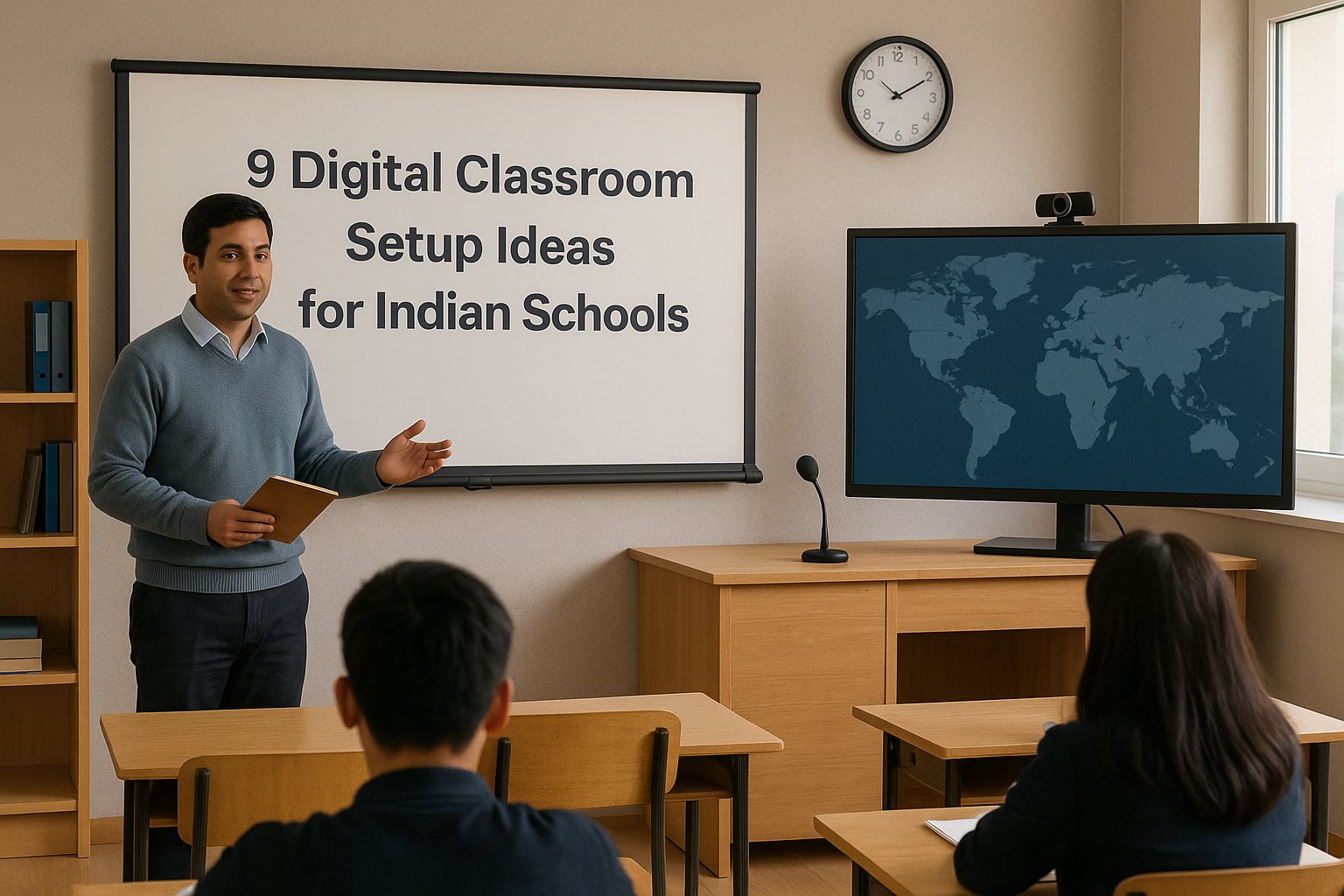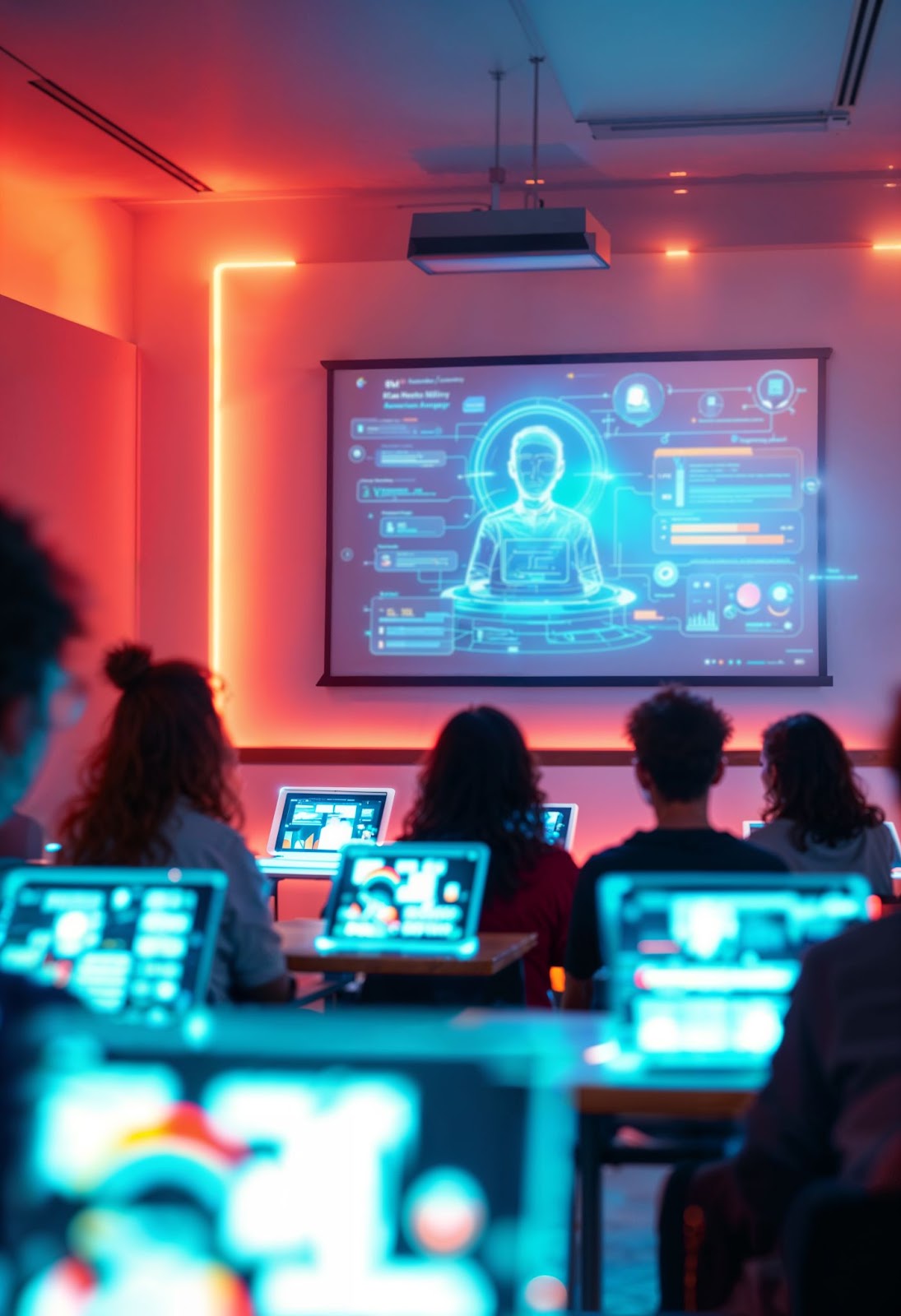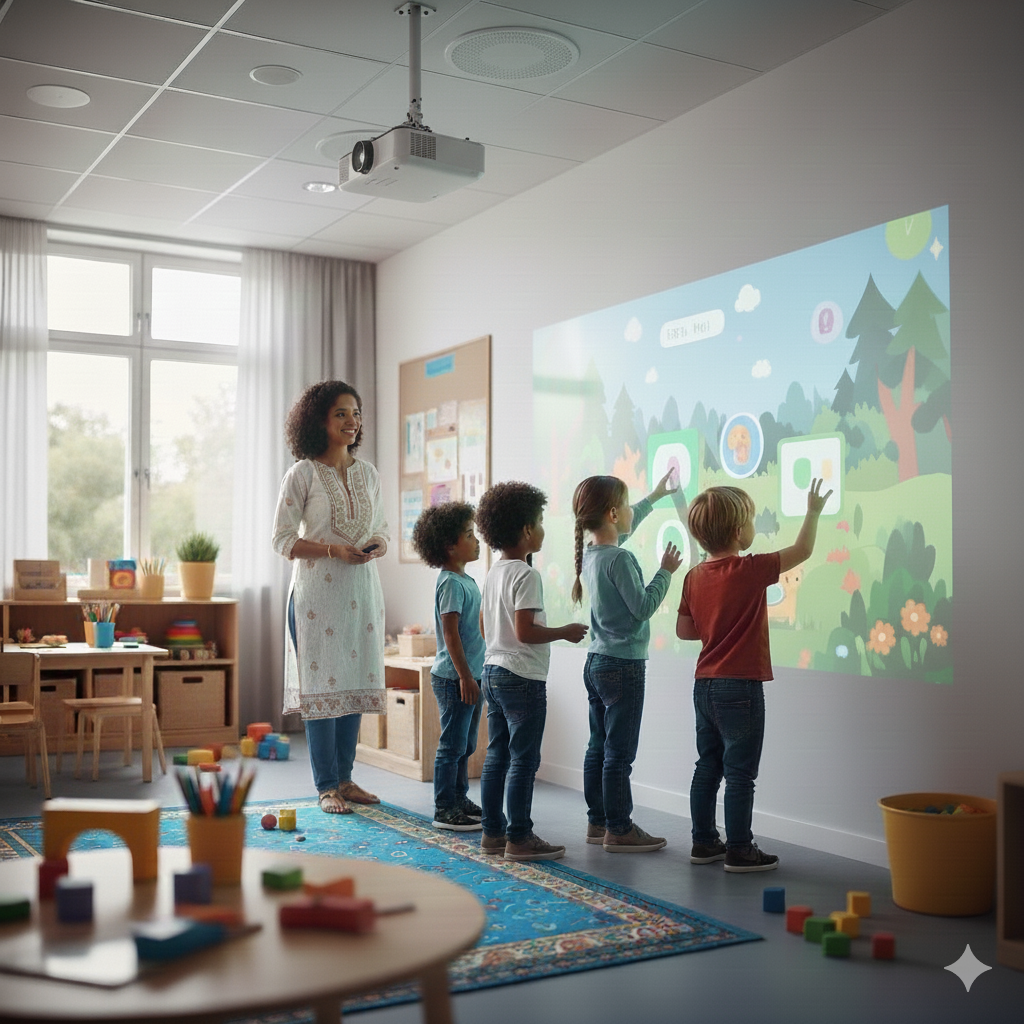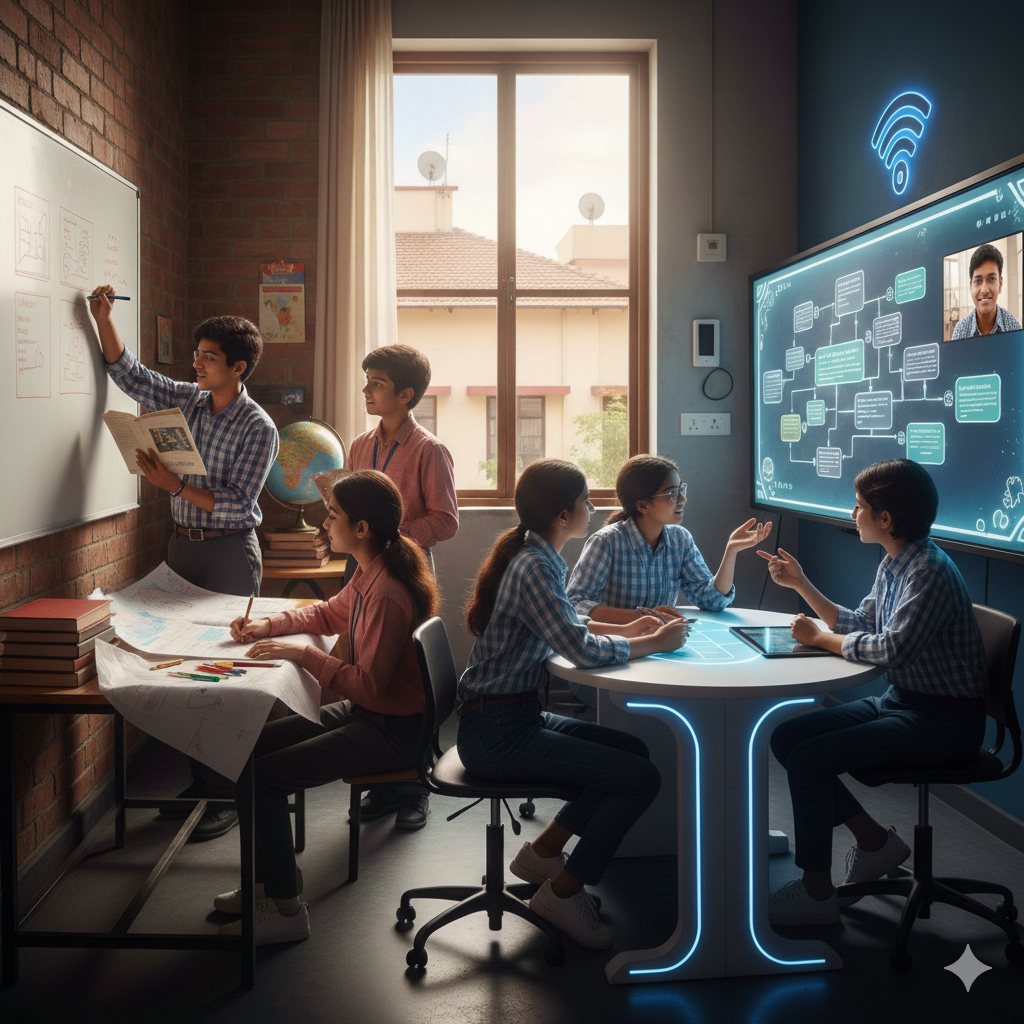9 Digital Classroom Setup Ideas for Modern Indian Schools and Colleges

There’s no one-size-fits-all when it comes to building a digital classroom. What works for one school might not suit another. That’s why the smartest approach is to treat digital classroom tools as building blocks—modular elements that can be added, combined, or scaled depending on what a particular classroom needs.
You don’t need to adopt everything at once. Many institutions start with one or two key upgrades, then expand gradually.
This blog discusses nine practical ideas that work well in Indian classrooms, whether you’re upgrading a single room or designing an entire smart campus.
Why Thoughtful Digital Classroom Setup Matters
Digital tools alone don’t change outcomes. It’s how you implement them that counts. A well-designed digital classroom leads to:
- Better student engagement
- Clearer and more flexible teaching
- Higher return on technology investment
Instead of layering tools randomly, a strategic digital classroom setup ensures that every piece of teaching equipment plays a role in improving the learning experience.
9 Digital Classroom Setup Ideas Educators Should Know

Source: Freepik
1. The Interactive Teaching Wall
An interactive teaching wall combines visuals, audio, and touch into one seamless teaching surface. Think of it as a digital chalkboard, only far more versatile. Teachers can write, draw, play videos, or explain complex topics in a more engaging way.
This kind of setup works especially well in senior classes, lecture halls, or spaces where deep explanation is part of daily teaching. It’s also a smart use of wall space in classrooms that are already tight on room for extra hardware.
2. Smart Class Corner for Everyday Lessons
If you're just getting started, converting a corner of the classroom into a smart teaching space is a good first step. A simple setup—projector or display, speaker, and a device to run content—can instantly enhance how lessons are delivered.
Teachers can play videos, show diagrams, or walk students through presentations without replacing the entire classroom’s infrastructure. It’s a cost-effective way to adopt digital teaching without needing a full transformation.
3. Lecture Recording Station
More and more institutions are finding value in recording lessons especially for revision, asynchronous learning, or hybrid models. A basic recording setup with a fixed camera, mic, and screen capture tool lets you archive classes without extra effort from the teacher.
This setup doesn’t have to be fancy. It just needs to work reliably so students can revisit topics later. Many colleges and coaching centers are building entire digital libraries this way, one class at a time.
4. Interactive Display Zones in Labs
In science or computer labs, visuals and interactivity can make all the difference. Setting up a small zone with a digital display, interactive input, and content mirroring helps students engage with diagrams, simulations, and experiments more deeply.
It’s especially useful during demonstrations. Teachers can show a close-up of a microscope slide or live data reading without students crowding around. Plus, students can interact with the display directly during group activities.
5. Seminar Room Setup for Special Sessions
Schools often host guest speakers, training sessions, or virtual classes. A dedicated seminar room equipped with a large display, webcam, mic system, and stable internet can make these sessions much smoother.
It’s not just for special occasions. This setup can double up as a remote teaching hub or a hybrid classroom, especially for higher education where expert lectures and collaborative learning are more common.
6. Collaborative Pods for Group Work
Group work is becoming more important in today’s classrooms. Setting up collaborative pods encourages teamwork and discussion. It comprises clusters of desks with access to tablets or a shared screen.
Each pod can work on a project while the teacher oversees progress. It brings a new energy to class time, especially in middle and senior grades where problem-solving and peer learning are part of the curriculum.
7. Hybrid-Ready Classrooms
Hybrid classrooms support both in-person and online learners. A setup with good audio pickup, dual cameras, and a connected screen ensures remote students aren’t left out.
This is particularly useful during exam prep or special lectures. It also helps colleges reach students in different locations without needing multiple sessions.
8. Digital Assessment Station
Digital assessments aren’t just about exams. They help track progress, give instant feedback, and support differentiated learning. A digital assessment station can include tablets, a shared screen, and basic testing software.
It makes quizzes and tests easier to manage, especially when teachers want to mix MCQs, video-based questions, or peer-graded assignments. And students tend to stay more engaged when assessments feel interactive.
9. Portable Teaching Kit for Rotational Use
Some schools can’t equip every room right away. That’s where a portable teaching kit comes in. It consists of a compact set of tools (laptop, mini projector, speaker, webcam) that can be wheeled into any room.
It’s a flexible way to share digital resources across classrooms. Teachers can book it for their periods, plug in, and start teaching. No fixed installation needed.
Key Takeaway
You don’t need all nine ideas to start building a digital classroom. In fact, most schools combine a few elements based on what fits their teaching style, infrastructure, and budget.
What matters is choosing tools that actually support better teaching, not just ones that look impressive. Whether you begin with a single smart corner or set up an entire interactive wall, you’re still moving toward a more engaging, future-ready classroom.
If you're looking for something flexible that can bring many of these blocks together, Roombr is designed to support a variety of digital classroom setups without locking you into a one-size-fits-all model. You can explore it through a free demo and see how it fits your own classroom strategy.
Foziya Abuwala
Share
Step Into the future of
Education with Roombr

















